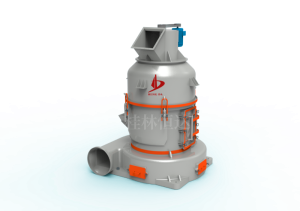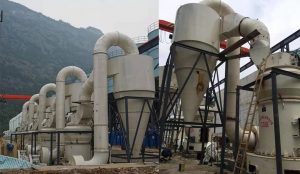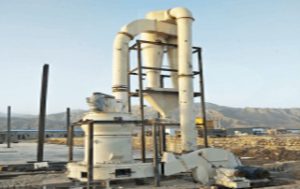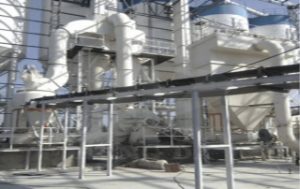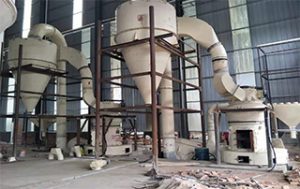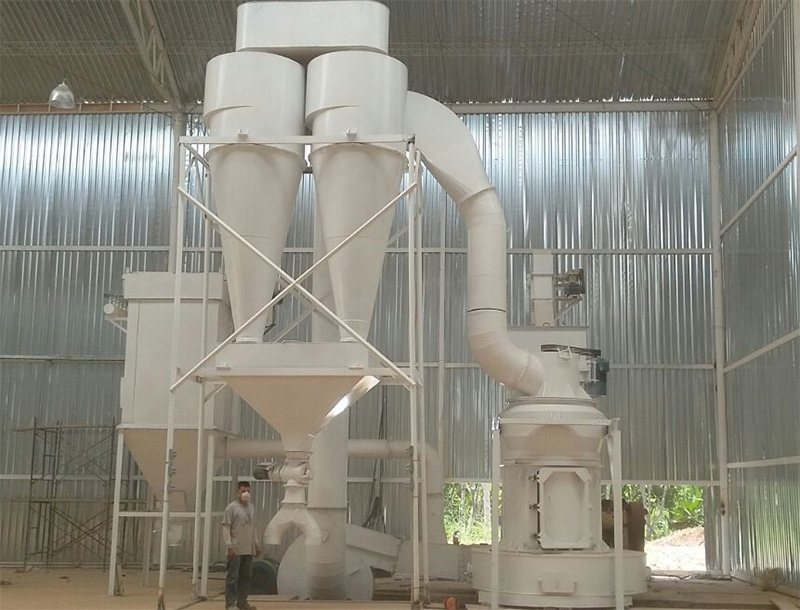The Ministry of environmental protection has carried out intensive supervision on air pollution prevention and control in 28 cities in Beijing, Tianjin, Hebei and surrounding areas for more than a month. This environmental protection inspection, which will last one year and a total of 25 rounds, has a wide range, long time and great strength. It is known as the largest action directly organized at the national level in the history of China’s environmental protection.
Information from the Ministry of environmental protection shows that since the supervision was carried out for more than a month, the Ministry of environmental protection has supervised 1390 outstanding environmental problems in three batches. What problems have been found in this operation?
28 cities, 25 rounds, 5600 people for one year, and the largest environmental protection supervision in history was launched
According to the arrangement of the Ministry of environmental protection, each city is equipped with 8 inspectors, about two rounds a week, and 25 rounds of strengthened supervision will be carried out in 28 cities in one year.
The 28 cities supervised are the air pollution transmission channel cities in Beijing, Tianjin and Hebei – including Beijing, Tianjin, Shijiazhuang, Tangshan, Langfang, Baoding, Cangzhou, Hengshui, Xingtai and Handan in Hebei Province, Taiyuan, Yangquan, Changzhi and Jincheng in Shanxi Province, Jinan, Zibo, Jining, Dezhou, Liaocheng, Binzhou and Heze in Shandong Province, Zhengzhou, Kaifeng, Anyang, Hebi in Henan Province Xinxiang, Jiaozuo, Puyang.
2017 is the closing year of the first phase of the “ten atmospheric articles”. According to the requirements, the average annual concentration of PM2.5 in Beijing this year should be controlled at about 60 micrograms per cubic meter. In 2016, this figure was 73 micrograms per cubic meter. At the same time, the “ten atmosphere articles” are equipped with very detailed assessment methods to assess the improvement of air quality in various places.
The situation is not optimistic. In the first quarter of this year, due to adverse meteorological conditions, the recovery of industrial production and other factors, the average proportion of excellent days in the above 28 cities was 42.8%, a year-on-year decrease of 0.7 percentage points. The proportion of days with severe pollution and above was 20.7%, an increase of 5.1 percentage points year-on-year. Among them, the average concentration of PM2.5 was 103 micrograms per cubic meter, a year-on-year increase of 12%; The average concentration of PM10 was 160 micrograms per cubic meter, unchanged year-on-year. Compared with the same period last year, it can be said that the air quality has not improved, but deteriorated. This poses a great challenge to the task of improving air quality throughout the year.
At the beginning of this year, the Ministry of environmental protection launched a special inspection on air quality in the first quarter, and has carried out a round of carpet “bombing” of Beijing, Tianjin, Hebei and surrounding cities. Chen Jining, Minister of environmental protection, said that the supervision “has promoted and solved a number of outstanding environmental problems”.
Since then, the Ministry of environmental protection has formed a “seamless connection” in the supervision of Beijing, Tianjin, Hebei and surrounding areas: a few days after the end of the special supervision in the first quarter, with a round of heavily polluted weather in early April, the Ministry of environmental protection carried out emergency supervision. Then, the Ministry of environmental protection issued a “big move” – dispatched 5600 environmental law enforcement officers to carry out a one-year air pollution prevention and control and strengthen supervision in “2 + 26” cities. Only because of the third batch of central environmental protection inspectors, starting from the second round of strengthened supervision on April 28, five cities in Tianjin and Shanxi suspended the corresponding rounds of supervision.
Supervise more than 10000 enterprises and units, and more than 60% of the inspected enterprises have environmental protection problems
From the arrival of the inspection team in early April to May 17, the inspection team inspected 11674 enterprises (units) and found that 7909 enterprises had environmental problems, accounting for about 67.75% of the total inspection.
The reporter of “Xinhua viewpoint” found that the main problems exposed by the supervision are as follows:
——Pollution control facilities into furnishings. The enterprise’s pollution control facilities operate abnormally, and the pollutants are discharged directly without treatment. Among the problem enterprises, 724 pollution control facilities did not operate normally. For example, the inspection team found in Cheng’an County, Handan City, Hebei Province that the desulfurization facilities of Youyuan new wall materials Co., Ltd. in this county were shut down, and the flue gas generated by the enterprise was discharged unorganized from the kiln top bypass without being treated by the desulfurization facilities.
Wang Canfa, a professor at China University of political science and law, said that the cost of environmental protection management of enterprises is high, and some enterprises with inadequate environmental awareness will try their best to reduce costs. Therefore, the abnormal operation of enterprise pollution control facilities does not rule out the equipment reasons, but it is more caused by human factors.
——Online monitoring data “reprocessing”. The inspection team found that 17 enterprises were suspected of fraud in online monitoring data. For example, the flue cross-sectional area of the flue gas sampling platform of Shandong Zibo Chongzheng Cement Co., Ltd. is actually 6.06 square meters, and the parameters of the online monitoring system are set to 3.50 square meters, resulting in that the flue gas emission uploaded to the monitoring platform is only 57.76% of the actual emission. The emission of pollutants such as soot, sulfur dioxide and nitrogen oxides is seriously inconsistent with the actual emission.
——Materials liable to raise dust are not sealed or effective covering measures are not taken, and there are many problems with imperfect dust prevention measures. Among them, the problems of bare soil on the construction site, covering of enterprise materials, and dust emission from municipal projects are more prominent. For example, the inspection found that 39 enterprises such as Baoding Weiqun Food Technology Co., Ltd. and 35 enterprises such as Heze Chengwu Jin’an Thermal Power Co., Ltd. had ineffective dust prevention measures and no “Three Prevention” measures.
The problem of “scattered and dirty” enterprises is still prominent, and the phenomenon of missing and concealing reports is more common. The “scattered and dirty” enterprises have become the most concentrated problem exposed in the current strengthening supervision. Among the 7909 problem enterprises found in the first two rounds of supervision, there are 2695 “scattered pollution” problem enterprises.
“Scattered pollution” enterprises generally do not comply with national industrial policies and local industrial layout plans, do not have any environmental protection treatment facilities, excessive discharge of pollutants, and incomplete or even no land, environmental protection, industry and commerce, quality inspection and other procedures. Such enterprises generally have small scale, large quantity, scattered distribution and poor technology, and do not enter centralized industrial parks. Some are in rural areas or even mountainous areas, and it is difficult to achieve effective supervision at the grass-roots level.
When the person in charge of the Ministry of environmental protection supervised Shijiazhuang in February, he went to a gypsum powder enterprise. Stepping on the thick gypsum dust on the ground, in the humble workshop, the original grinding machine is wrapped with a thick layer of rust, and the workshop ground is covered with a large amount of dust. Several workers said they were overhauling the equipment and were covered with white dust.
The person in charge of the Ministry of Environmental Protection said that great efforts should be made to rectify the environmental pollution problems caused by “scattered pollution” enterprises, and resolutely shut down and ban “scattered pollution” enterprises that do not comply with the national industrial policy and have no hope of governance according to law. At the same time, we should shape a good market order, make room for the development of good enterprises and promote industrial transformation and upgrading.
By the end of March, 28 cities had provided more than 56000 “scattered pollution” enterprises to the Ministry of environmental protection. According to the requirements of the work plan for the prevention and control of air pollution in Beijing, Tianjin, Hebei and surrounding areas, all “scattered pollution” enterprises should be cleaned up and rectified by October this year.
The Ministry of environmental protection also said that some cities still have the problems of “scattered pollution” enterprises, which are not carefully investigated and the rectification efforts are not enough. Some “scattered pollution” enterprises that need to be shut down and banned according to law have prominent problems in illegal production. The Ministry of environmental protection requires cities to further improve the base number of “scattered pollution” enterprises by the end of May and report to the Ministry of environmental protection. Since June, if the strengthened supervision team still finds problems such as incomplete investigation of “scattered pollution” enterprises, illegal production, new construction or unauthorized resumption of production, relevant personnel shall be investigated for responsibility.
The Ministry of environmental protection will supervise the problems found to promote local rectification one by one. At present, the Ministry of environmental protection has issued three supervision notices to supervise 1390 environmental problems. The first batch of 98 environmental problems were supervised and 83 were rectified, with a completion rate of 84.69%. The second batch supervised 554 environmental problems and completed 367 rectification, with a completion rate of 66.2%. The 327 outstanding environmental problems and 411 “scattered pollution” enterprise problems supervised by the third batch are being rectified. The Ministry of environmental protection will send six inspection teams to check the supervision problems one by one.
